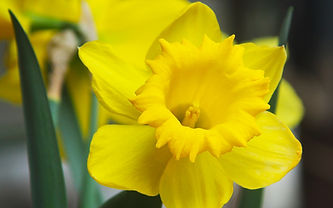

Mt Cook National Park

Arrowtown

BEST TIME TO VISIT
New Zealand’s seasons are the reverse of the Northern Hemisphere. When everyone is bundled up in the US, Kiwis are having BBQ’s and enjoying beach weather.
New Zealand has a largely temperate climate but it does vary wildly. The far north has subtropical weather during summer, while inland alpine areas of the South Island can be as cold as 14°F in winter. However, most of the country lies close to the coast, which means mild temperatures year-round. The weather can change unexpectedly, so you need to be prepared for ‘four seasons in one day’, no matter what time of the year you visit.
The average New Zealand temperature decreases as you travel south. January and February are the warmest months, and July is the coldest month of the year.
There is no defined ‘rainy’ season however the rainiest period is May – August. It can and does rain anytime of the year with some parts of the country experiencing higher levels of rainfall than others, particularly Fiordland National Park and Westland (West Coast of the South Island).
New Zealand is great at any time of the year, however, the best time to visit New Zealand depends greatly on your interests. The temperatures listed below are a guide. It is not uncommon to experience temperatures outside of these.
Daylight Savings Starts
24 September 2023
29 September 2024
Daylight Savings Finishes
7 April 2024
6 April 2025
Summer months you can have daylight until 9:30/10pm in some parts of the country.
SPRING

-
September, October, November
-
Average daily temperature: 61F-68F
-
Average rainfall by month: 105mm, 100mm, 85mm
Spring is the best time to visit if you are looking for fewer crowds. The weather is starting to warm up, with still a chance of rain, days are getting longer, daylight savings starts late September. Baby lambs are bounding around the countryside and daffodils are popping up everywhere. There is still a dusting of snow on the mountain tops, it’s an incredibly picturesque. Early morning’s and nights will be cool with a nip in the air, days are warm - it’s great for hiking and overall a very pleasant time to travel.
AUTUMN (Fall)
.jpg)
-
March, April, May
-
Average daily temperature: 55F – 72F
-
Average rainfall by month: 87mm, 99mm, 112mm
Autumns brings comfortable temperatures (typically a little warmer on the North Island). It is starting to cool so you may begin to notice a nip in the year. The weather is known for being the most ‘settled’ at this time of the year. It’s also a quieter time with fewer people around, April the leaves are changing color (a sight to see, particularly in and around Arrowtown) and the hiking and biking trails are quieter. It’s a great time of the year to visit.
SUMMER

-
December, January, February
-
Average daily temperature: 67F-75F
-
Average rainfall by month: 92mm, 73mm, 66mm
Summer brings the warmest weather and longest daylight hours. The cycling and hiking trails are busy and beaches bustling. This is a hugely popular time to be in New Zealand with the Northern Hemisphere heading down to escape winter. Planning ahead is important.
Note: Christmas Day, Boxing Day (Dec 26),New Year’s Day and Jan 2nd are public holidays. Many restaurants & museums will be closed on those days. Some tour operators also do not operate on Christmas Day. Hotel restaurants are open. If you’re in a National Park or out hiking, this clearly will not affect you.
WINTER

-
June, July, August
-
Average daily temperature: 44F-60F
-
Average rainfall by month: 126mm, 145mm, 118mm
Winter brings ski season with snow to the mountains and an abundance of clear blue skies – great time of the year for photography and those not fazed by the colder temperatures and shorter days. It’s the quietest time of the year in terms of visitors which means some activities may be closed for the season. Much depends on where in New Zealand you visit as to whether or not you’ll experience snow. Snow chains may be required on your rental vehicle. We’ve definitely had families from the US travel at this time of the year but it does require careful planning to ensure you make the most of your time.
